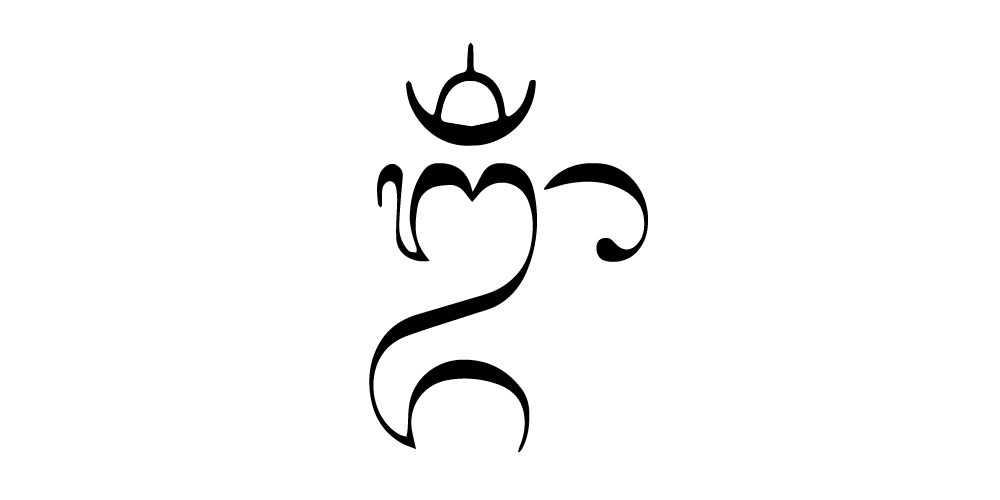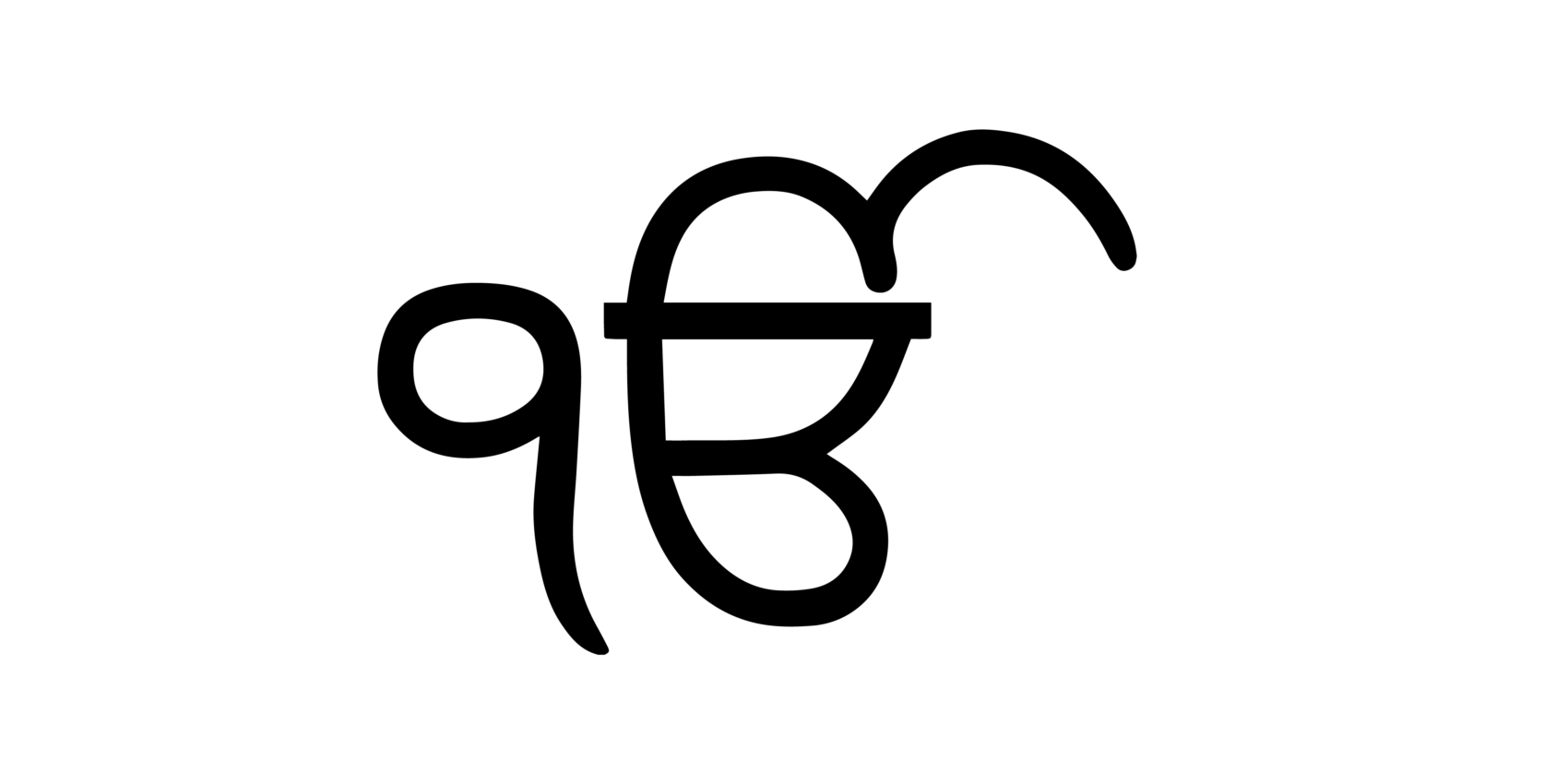OM 🕉️ Symbol Meaning

Om, often represented by the symbol “🕉”, is a sacred syllable that has captivated the minds and spirits of countless individuals across the globe.
With roots deeply embedded in ancient Indian religion, this primordial sound has transcended its origins to become a universal emblem of peace, spirituality, and connection.
The word “Om” is not just a word; it’s a resonance, a vibration that aligns with the very pulse of the universe.
What is the meaning of OM?
“What is” Series video created by Brett Larkin for YOGI TIMES.
The Universal Sound
The sound “Om” is believed to be the first vibration from which the universe emerged. This original vibration encapsulates the essence of the universe and everything within it.
The Bhagavad Gita, one of the three sacred Vedic scriptures, alludes to the chant as the cosmic sound, the sound of creation, and the sound that connects every living being to the supreme power.
Let’s discuss its origins in further detail to better understand this sacred syllable.
More Than Just a Sound
While the sound of Om is powerful, the symbol representing Om is equally significant.
Comprising three curves, a semicircle, and a dot, each element of the Om symbol has a distinct meaning, representing various states of consciousness and the journey of life.
The journey of understanding Om delves deep into the realms of spirituality, history, and self-knowledge. As we embark on this journey, we’ll explore the various facets of Om, from its historical context to its modern-day relevance.
Also read >>> Rising sign
Origin of OM 🕉️
The Vedic Period 1500 BCE – 500 BCE
The history of Om dates back to the ancient Vedic period in India, over 5,000 years ago. The ancient Vedic period in India was a time of great cultural and intellectual development. During this period, the Vedas were composed, the oldest surviving Hindu scriptures.
These scriptures, which include the Bhagavad Gita, the Mundaka Upanishad, and the Mandukya Upanishad, regard Om as the essence of all mantras, the very sound of the supreme power.
It’s believed that the universe, in its entirety, was created from the resonance of this sacred syllable.
The earliest mention of the sacred syllable Om is found in the Rig Veda, the oldest of the four Vedas. In the Rig Veda, Om is called the “udgitha,” or the primordial sound of creation. This is where the definition of Om as the fundamental vibration of the universe originates.
The Rig Veda is a collection of over 1000 hymns that are dedicated to various Hindu deities, such as Indra, Agni, and Soma.
The Rig Veda also contains hymns describing the Vedic people’s way of life, beliefs, and values.
A complex and fascinating text, it provides a valuable window into the life and culture of the ancient Vedic people. It teaches us about the Vedic people’s social structure, their political system, and their religious beliefs.
The Rig Veda also provides insights into the Vedic people’s language, literature, and culture., including the yoga symbols meanings and their significance.
The Vedic people had a strong oral tradition, and the Rig Veda has been passed down from generation to generation through oral recitation.
Om in the Upanishads and Yoga Sutras
The Upanishads provide further insights into the meaning and significance of Om. The Upanishads teach that Om is the Brahman, or the ultimate reality.
The Brahman is the source of all creation, and Om is the sound of the Brahman. This is where we find the answer to “what’s an Om” in the context of spiritual and philosophical teachings.
Om is also mentioned in the Yoga Sutras of Patanjali, a foundational text of yoga philosophy.
The Yoga Sutras teach that Om is the bija, or seed mantra, of all other mantras. A mantra is a word or phrase that is repeated during meditation. The repetition of a mantra helps to focus the mind and to deepen the meditation practice.
In various spiritual traditions, Om is referred to as the “seed syllable” or “Bija Mantra.” Just as a seed contains the potential to grow into a mighty tree, the syllable Om encapsulates the essence of the entire universe.
t represents the union of mind, body, and spirit, and its vibrations echo the very pulse of creation.
In Hindu tradition, the Aum symbol is the vibrational sound of the force behind all creation and manifests from Brahman, the absolute and ultimate reality.
It was felt by the rishis (Hindu sages) as they meditated and realized the universe’s primordial essence within this syllable. We commonly find at the beginning and end of many sacred Hindu texts, such as the Upanishads and the Vedas.
Chanting the sound invokes the sound of creation within the universe and the supreme soul or supreme reality. It invites the experience and embodiment of this spiritual wisdom.
Om in Different Religions
In Hinduism
Om, often written in Sanskrit as “ॐ, is revered as the most sacred of sounds, often prefixed to religious mantras and prayers. It signifies the essence of the ultimate reality or consciousness.
The Bhagavad Gita, a 700-verse Hindu scripture, speaks of Om as the sound of the universe, a vibration that signifies the presence of the divine in all things. This leads to the question, “what does Om mean?” In essence, it represents the entirety of the cosmos and the ultimate truth.
In Buddhism
Om which has its roots in Hinduism, also holds the Om syllable in high regard. In Buddhist practices, Om is often combined with other syllables to create mantras used in meditation and chanting. F
or instance, the mantra “Om Mani Padme Hum” is frequently recited in Buddhist traditions, invoking compassion and blessings.
In Jainism
Jainism, another ancient Indian religion, perceives the chant as a condensed form of reference to its five main deities.
The syllable is used in rituals, prayers, and meditation practices, symbolizing the teachings of the Jain Tirthankaras or spiritual teachers.
Om has been chanted by Hindus, Buddhists, and Jains for centuries. It is used in a variety of religious and spiritual practices, such as meditation, prayer, and yoga.
Om is also used in everyday life, as a greeting, a blessing, or a way to express reverence, much like how a mutual fund combines various financial assets for investors.
Symbolism, Sound, and Vibrations of Om

Elements of the Om Symbol
The Om symbol, often represented as “🕉,” is a unique combination of curves, a dot, and a semicircle. Each element of this symbol holds profound meaning.
The large bottom curve symbolizes the waking state of consciousness, the middle curve represents the dream state, and the upper curve denotes the state of deep sleep.
The dot above these curves signifies the fourth state of consciousness, transcending the usual three states. The semicircle below the dot represents the veil of illusion, separating the individual from the ultimate reality.
Om’s physical representation, especially in art and culture, has evolved over time. The symbol has become a global icon, from intricate carvings in ancient temples to modern-day tattoos and jewelry.
The three-part sound
The aforementioned Mandukya Upanishad explains the various facets of the syllable Om, describing it as the sum of all sounds, beginning with A, transitioning through U, and culminating in M – representing the entirety of existence, from birth to death to rebirth.
Each letter corresponds to a state of consciousness. “A” represents the waking state, “U” symbolizes the dream state, and “M” denotes the deep sleep state.
Beyond these three states lies the fourth state, “Turiya,” symbolized by the silence following the chanting of Om.
This state represents pure consciousness, transcending the physical and mental realms.

The Silence Beyond Om
While the sound of Om holds profound significance, the silence that follows its chanting is equally important.
This silence represents the state of “Shunyata” or emptiness, deeply rooted in Buddhist philosophy.
In this silence, one can experience it’s true essence, transcending the confines of the physical and mental realms.
The States of Consciousness Represented by Om
As mentioned, the symbol encapsulates various states of consciousness.
Beyond the waking, dream, and deep sleep states, the silence following the chanting leads to the fourth state, “Turiya.” Some spiritual teachers also speak of a fifth state, “Turiyatita,” representing a state of transcendence beyond even Turiya.
Also Read>>> Meaning of all the other Yoga Symbols

The Science Behind the Sound
The Physical and Metaphysical Aspects
Every sound in the universe has a vibration, and Om is believed to be the primordial sound from which all other sounds and vibrations emanate.
While the physical representation of Om is widely recognized, its metaphysical aspects are equally intriguing.
Just as a financial institution manages various financial assets to create a balanced portfolio, the sound of Om, when chanted, resonates at a frequency of 432 Hz, which is believed to be the natural frequency of the universe.
This alignment of frequencies is said to connect the individual with the cosmos, bridging the gap between the microcosm and the macrocosm.
This synchronisation aligns our personal vibrations with the universal vibrations, fostering a sense of harmony and balance, much like how financial institutions strive to balance market value with investment risks.
The benefits of chanting the sound
Modern science has begun to recognize the benefits of chanting Om.
The rhythmic pronunciation and the vibrations it produces have been observed to stimulate the nervous system, enhancing relaxation and mental clarity.
Studies published in international journals have highlighted the positive impact of chanting on the physiological state, promoting overall well-being, akin to how financial assets contribute to the overall health of a financial portfolio.
Chanting and the Quest for Self-Knowledge
The Inner Resonance of Om
When chanted with understanding and devotion, Om resonates not just externally but also within one’s inner self.
This inner resonance leads to self-awareness, allowing individuals to delve deeper into their psyche, uncovering layers of consciousness and inching closer to self-realization.
The Transformative Power of Om
Embarking on a journey with Om is akin to setting sail on an ocean of self-discovery.
The sound, the symbol, and the teachings associated with Om have the power to transform lives.
From instilling a sense of peace and calm in turbulent times to providing clarity in moments of confusion, chanting the sound serves as a guiding light, illuminating the path to spiritual growth and enlightenment, much like how financial institutions guide investors through the complexities of the market.
A Tool for Self-Inquiry
The teachings associated with Om’ encourage self-inquiry.
By meditating upon the sound and meaning, individuals embark on a journey of introspection, questioning the nature of reality, their purpose in life, and their connection to the universe.
Om and Personal Evolution
Individuals who incorporate the teachings and practices associated with Om often speak of a profound shift in their perspective.
They begin to view challenges as opportunities for growth, develop a deeper appreciation for life’s blessings, and cultivate a sense of gratitude.
This personal evolution, rooted in the wisdom of Om, leads to a life of purpose, joy, and fulfillment.

The Ultimate Goal: Moksha
In Hindu philosophy, the ultimate goal of human life is to attain “Moksha” or liberation from the cycle of birth and death.
Chanting Om, understanding its significance, and living by its teachings pave the way for this liberation, leading to eternal bliss and peace.
Related >>> Get your beautiful Om silver necklace here
Healing and Therapeutic Powers
Om and Physical Well-being
The act of chanting has been observed to have tangible benefits on physical health. The rhythmic breathing involved in chanting stimulates the parasympathetic nervous system, promoting relaxation and reducing stress.
Additionally, the vibrations produced during the chant can enhance blood circulation and oxygenate the body, leading to increased vitality and energy.
Mental and Emotional Benefits
On a psychological level, the chant serves as an anchor, helping individuals focus their minds and reduce wandering thoughts.
This heightened state of concentration can alleviate anxiety, depression, and other mental health challenges.
The repetitive sound of Om provides a sense of comfort and stability, grounding individuals in the present moment.
Om and Energy Centers
In yogic traditions, the body is believed to have seven primary energy centers or chakras.
Chanting is said to activate and balance these chakras, especially the “Ajna Chakra” or the third eye, located between the eyebrows.
This activation can lead to heightened intuition, clarity, and a deeper connection with one’s inner self.
Global Influence and Contemporary Relevance
The Universal Appeal of Om
The appeal of Om isn’t limited to those who follow Indian religions or practices.
Its profound meaning, combined with its simple yet captivating design, has made it a favorite among people of various faiths and beliefs.
Whether it’s used in a yoga class in the West or a meditation retreat in the East, the symbol transcends boundaries, uniting people in their quest for spiritual growth and understanding.
In today’s fast-paced world, where chaos and strife are often the norm, Om stands as a beacon of peace and unity.
Its sound, when chanted, brings about a sense of calm, grounding the individual and connecting them to a higher consciousness.
Many peace movements and spiritual gatherings use the symbol to represent harmony and universal love.
Om in Yoga and Meditation
In yoga practice, (ॐ) is often chanted at the beginning and end of class. This helps to center the mind and body and to create a sense of community and oneness.
Chanting Om is also said to have a calming effect on the nervous system and to promote relaxation.
The chant is a common practice in many yoga studios to help center the mind and body and to create a sense of community and oneness within the class.
Pranayama is the yogic practice of breath control. You can chant Om as you inhale and exhale or simply hold the sound in your mind during your pranayama practice.
During your asana practice, you can repeat the sound silently or aloud as you move through your yoga poses. This can help to keep your mind focused and present.
How to chant Om
To chant Om, sit in a comfortable position with your spine straight.
Close your eyes and take a few deep breaths.
Then, begin to chant in a long, slow, and steady voice.
The sound should be pronounced as “Aum.”
There is no right or wrong way to chant Om. The most important thing is to find a way that feels comfortable and natural to you.
You can chant for as long as you like, but a good starting point is to chant for three to five minutes.
As you chant, focus on the vibrations of the sound and allow them to fill your body and mind.
Meditation, too, is closely linked with Om.
Many a meditative practice, especially those rooted in Indian traditions, use the chant Om as a means to focus the mind and delve deeper into one’s inner self.
The repetitive sound of Om serves as a mantra, aiding in concentration and leading the practitioner to a meditative state.
You can chant Om silently or aloud as you meditate. This can help to deepen your meditation practice and lead to greater states of consciousness.
Integrating Om Respectfully in Spiritual Practices
While Om has found its way into various practices worldwide, it’s essential to approach it with respect and understanding.
Using Om without grasping its profound meaning can dilute its significance.
Educating oneself about its origins, significance, and the right way to incorporate it into one’s spiritual practice is crucial.
Art, Music, and Popular Culture
The Om symbol and its sound have permeated various facets of art, music, and popular culture.
Musicians incorporate the sound of Om in their compositions, creating melodies that resonate with the soul.
Artists, inspired by the intricate design and profound meaning of the Om symbol, create masterpieces that captivate the viewer.
In popular culture, Om has become synonymous with peace, spirituality, and a connection to one’s roots.
A Beacon for the Future
In an ever-changing world, Om serves as a beacon, guiding individuals on their spiritual journey.
As more people seek purpose, meaning, and a deeper connection with the universe, Om will play a pivotal role in their quest.
It will continue to be a symbol of unity, peace, and the infinite potential that lies within each one of us.
Closing 🕉️
Om, the universal sound and symbol of love, unity, and oneness, is a timeless guide and source of inspiration.
Its profound meaning and multifaceted symbolism offer a path to peace, harmony, and collective well-being.
Through its teachings, Om encourages us to embrace values of love, compassion, and unity, and to lead lives of integrity, purpose, and service.
In a constantly changing world, Om’s timeless wisdom reminds us of our connection to the universe, our potential for spiritual growth, and the peace that lies within each one of us.
Let us carry the essence of Om in our hearts, allowing it to guide, inspire, and transform us.
Let us embrace the sound of the universe, resonate with its vibrations, and embark on a journey of love, peace, and oneness.
FAQs:
1. What are the different interpretations of Om?
There are many different interpretations of Om. Some people believe that Om is the primordial sound of creation, while others believe that it is the sound of the Brahman, or the ultimate reality. Still others believe that Om is a symbol of unity and interconnectedness.
The Om symbol “🕉” represents the sound of the universe. Each part of the symbol has a specific meaning, with the curves symbolizing different states of consciousness and the dot representing the absolute state of consciousness.
2. How is Om used in yoga practice?
Om is an important part of yoga practice. It is often chanted at the beginning and end of class, as well as during meditation and pranayama (breath control) exercises. Chanting Om helps to center the mind and body and to create a sense of community and oneness.
Om is also used as a mantra in yoga practice. A mantra is a word or phrase that is repeated during meditation. The repetition of a mantra helps to focus the mind and to deepen the meditation practice.
3. What are the benefits of chanting?
There are many benefits to chanting Om, such as reducing stress and anxiety, improving focus and concentration, promoting relaxation, deepening meditation, increasing self-awareness, and promoting spiritual growth.
4. How can I incorporate Om into my daily life?
- Chant Om at the beginning and end of your day.
- Use Om as a focal point for your meditation practice.
- Repeat the sound of Om silently or aloud as you go about your daily activities.
- Wear a piece of jewelry with the Om symbol on it.
- Place a statue or picture of Om in your home or workplace.
5. Is Om the symbol of God?
Om is not specifically a symbol of God but rather represents the essence of the ultimate reality or consciousness. It embodies the divine’s presence and is considered the sound of the universe in Hindu philosophy.
6. Does Om mean peace?
While Om itself doesn’t directly translate to “peace,” it is often associated with peace due to the calm and harmonious vibrations it produces when chanted. It symbolizes unity, completeness, and the infinite.


